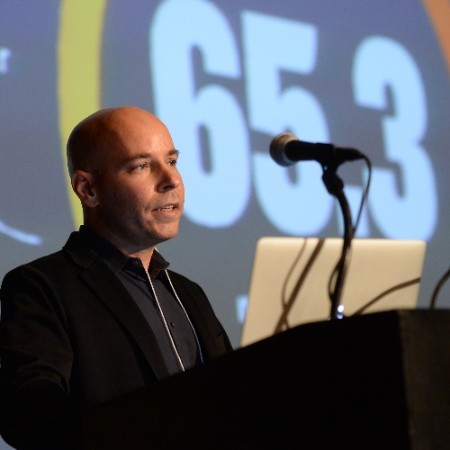In 2006 Blake Mycoskie founded TOMS Shoes, selling shoes under the Buy One, Give One model – for every pair of shoes you buy, TOMS gives one to a child in need in a developing country. TOMS became a big success and last year gave out their one millionth pair of new shoes. Mycoskie realized that TOMS’ “one for one” model could serve more needs than just shoes and started looking for the next challenge this model could effectively address. Eventually he had the answer and last June he announced TOMS’ new initiative – TOMS Eyewear, created to help give sight to people in need.
The promise of TOMS Eyewear is very simple: For every pair of glasses you purchase with TOMS Eyewear, the company will help give sight to one person in a developing country by providing a necessary medical treatment, prescription glasses, or a sight saving surgery. Just like its shoe program, TOMS offers customers an opportunity to make a significant difference in people’s lives by doing nothing more than just purchasing a product they want to purchase anyway. The big question is: can the “one for one” model that worked so well with footwear work with other products?
TOMS is a great example of a company poised to reach what BBMG calls New Consumers, because they offer not just great shoes, but also a triple value proposition – a product that works well, costs less (or at least is priced reasonably) and does some good. According to BBMG there are more than 70 million new consumers who are looking for brands that deliver a triple value proposition, which combines practical benefits, social/environmental benefits and "tribal benefits" (e.g., connecting them to a community of people who share their values and aspirations).
The first eyewear product TOMS has offered is sunglasses. They come in few styles and colors for men and women and feature hand-painted stripes which symbolize the three elements of One for One (you, the person you are helping give sight to and "bringing you together"). The sunglasses are manufactured in Italy and still are quite affordable at $135 or $145 for a pair.
Will New Consumers be willing to pay $135 or $145 for TOMS’ sunglasses given all the added benefits? On one hand, the “one for one” model worked very well with the shoes, but on the other there is no guarantee it can work with every product, no matter how valuable the donation made on behalf of the customer is.
First, the economy is tough right now so it might be that even conscious New Consumers will look for cheaper alternatives, even if they have fewer benefits. There is also the risk that extending the “one for one” model to more products will expose it to further questions about its effectiveness and value, especially with regard to the facts that it’s a donation-based program and that the products are not manufactured in the countries where they’re been provided.
TOMS also faces stiff competition from an existing provider with a similar value proposition. Warby Parker, has fashionable $95 sunglasses and a similar ‘buy a pair, give a pair’ offer. One wonders why TOMS would jump into a market with a direct competitor who offers a lower price. Perhaps TOMS assumes their brand will help them steal market share, however, we'd like to see the B1G1 model expand to new markets as well.
While TOMS and Warby Parker first they appear to be direct competitors, there are some important differences.
Both companies work with experienced partners to provide sight solutions, but while TOMS provides donation-based sight solutions, Warby Parker provides glasses in “in a manner that maintains dignity and fosters economic development.” Warby Parker does it by partnering with organizations that train low-income women to start their businesses selling affordable glasses to people in their community. This way Warby Parker believes they create a win-win solution, helping both people and local economies in need.
Warby Parker has the edge for empowerment, but both companies have strong and important missions.
TOMS first Sight Giving Partner is Seva Foundation, which has been implementing sustainable blindness prevention and sight restoration programs for over 30 years. Seva will start working with TOMS in providing sight treatments in Nepal, Cambodia and Tibet.
Mycoskie originally hoped that he'd be able to provide 250 kids in Argentina with new pairs of shoes. He's far exceeded that goal. If eyewear is only a fraction of the success of shoes, the gift of site will be given to many people around the world.
Raz Godelnik is the co-founder and CEO of Eco-Libris, a green company working to green up the book industry in the digital age. He is also an adjunct professor in the University of Delaware’s Alfred Lerner College of Business and Economics.

Raz Godelnik is an Assistant Professor and the Co-Director of the MS in Strategic Design & Management program at Parsons School of Design in New York. Currently, his research projects focus on the impact of the sharing economy on traditional business, the sharing economy and cities’ resilience, the future of design thinking, and the integration of sustainability into Millennials’ lifestyles. Raz is the co-founder of two green startups – Hemper Jeans and Eco-Libris and holds an MBA from Tel Aviv University.














